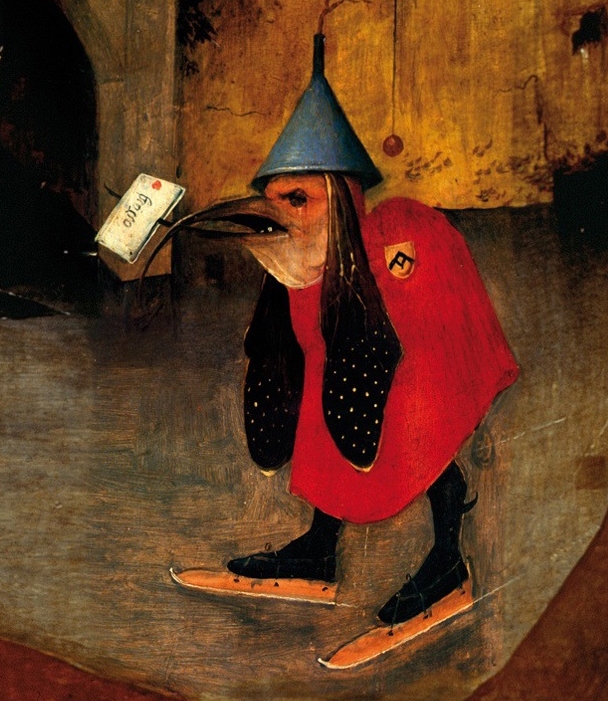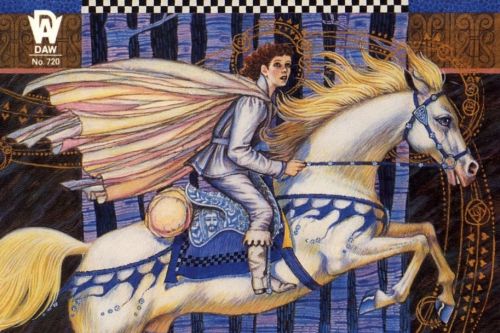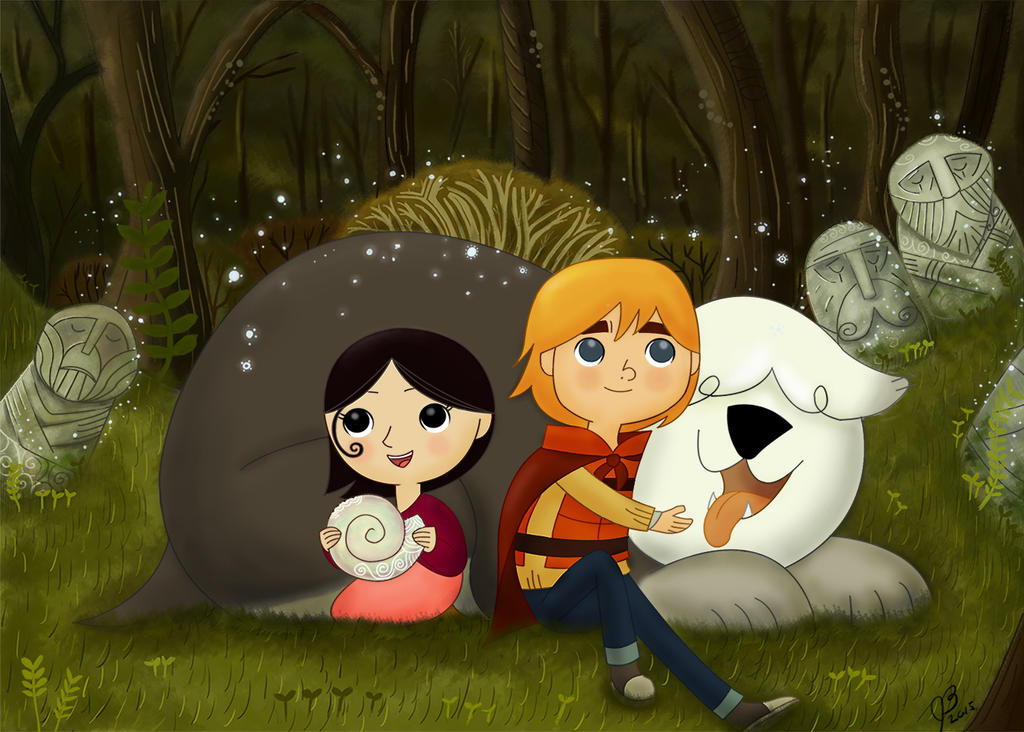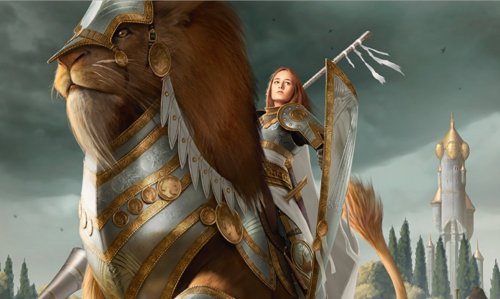In the interests of full disclosure, I received a free (electronic) copy of this book for review.
 |
| It looks like this. |
So. From its earliest days, D&D has traditionally provided its players which giant, alphabetical lists of three things: spells, monsters, and magic items. Of the three, magic items have typically generated the least interest. Everyone loves monsters, because they exert an active pressure on the game-world around them, creating those threats and obstacles and challenges and opportunities out of which a game of D&D is primarily composed. Spells give PCs tools for dealing with those challenges, and even in games where the spells available to the PCs are chosen by the GM (or the dice) instead of by the players, it's still players who actively select which spells their characters will memorise and cast at each point in the game. By comparison, magic items are weirdly passive: PCs have no control over where and when they find them, and their benefits are usually so obvious that there's no reason not to use as much magical loot as you can get your hands on. 'Do we attack the troll?' is a real question, the sort of thing a bunch of PCs might well have a legitimate argument over; but 'do we take its magic sword after killing it?' is pretty much a no-brainer. And then, once you've got it, 'should we use it?' is usually a similarly empty question: is it cursed? If not, then, yes, of course you should. Who should wield it? Whoever will get the most benefit out of it. 'Should we risk attacking the troll, or take our chances with the zombies in the other tunnel?' That's a real dilemma. 'Should I memorise sleep or charm person today?' Also a real dilemma. 'Should I wield my sword +1 or my sword +2?' just doesn't have the same weight to it.
Perhaps D&D just got off on the wrong foot with magic items to begin with. Sword +1, shield +2, chainmail +3, ring of protection, gauntlets of ogre power... they're just straight upgrades, things you bolt onto your character in the same way that you might install a more efficient engine into a car, or slot an improved graphics card into your PC. Potion of invisibility, wand of fireballs, scroll of raise dead... they're a bit better, because at least you have to decide when the optimal time to use them will be, but basically they're still just ammunition. Fortunately, there's another tradition of magic items in D&D, one which was especially visible in the earlier editions of the game before damage output in combat became the only assumed focus of play: magic items which don't just let you do the same things as before except more efficiently, but which actually open up weird new options for how to approach the game world. The Rod of Lordly Might, for example: a mace which can turn into a sword, an axe, a ladder, a compass, or a battering ram, depending on which button you press. A ring of water walking. A potion that lets you change your colour like a chameleon. These items don't just give you bigger numbers on your character sheet: they allow you to interact with your environment in qualitatively different ways.
Basilisk Goggles and Wishing Wells is a big book full of new magic items: over 570 of them, apparently. It should be compatible with almost any flavour of OSR D&D, largely because it's pretty light on rules: so light on rules, in fact, that it sometimes don't bother to provide any game mechanics at all for the effects which it describes. The reason it's so light on rules is because most of the items it describes barely interact with the rules system at all: the point of them is not to give you mechanical benefits, but to open up new possibilities. They are the kind of items that a character, faced with what Arnold K. calls 'OSR-style challenges', might find themselves describing as they mutter to themselves: 'You know what would really help, here? A ______ that would let us _________....'
How about this for an example: gloves that allow you to swim through cloud and fog (although not clear air) as though it was water. I love this magic item. It opens up an obvious benefit (movement in three dimensions), but with an obvious limitation (only if there's loads of water vapour in the area), and consequently with an obvious risk (if you're five hundred feet up when the cloud you're 'swimming' in dissipates, you're going to go splat). This combination thus challenges the players to engineer situations which will allow them to exploit the opportunities it offers to best advantage. Will the gloves let you 'swim' up through the air to get that valuable gem off the cavern roof? Yes, but only if you can figure out a way to fill the cave with fog, first: got any ideas for how to do that? Or switch it round, give them to an enemy, and watch the PCs wrack their brains for ways to get rid of all that mist while their foe is swimming around in mid-air: temperature alterations? Giant fans? At every point, the limitations places on the item open up opportunities for ingenious and intelligent play which would simply not exist if you'd just handed out a ring of flying instead.
Here's another one: 'shadow dust' which, when sprinkled on a surface, makes the affected object insubstantial to a depth of 10' while in total darkness, but solid again when light falls on it. The description mentions the possibility of using it to trap people inside the ground: put it on the floor, lure people onto it in the dark so that they fall through the now-insubstantial floor, then shine a light on it and leave them entombed within the rock, at least for as long as the light keeps shining. But they don't die in there, they just can't move... so how long can you keep that light on? If you interpret 'surface' more liberally, then the uses multiply further: throw the stuff all over your enemy's armour and weapons, then douse your lanterns and fight them in the dark, leaving them unarmed and unprotected! An item like this turns something which is normally just an assumed background element - the presence or absence of light in each location - into a tactical consideration with new relevance, potentially leading to some tense and/or comical scenes in which the PCs stumble around in pitch darkness, waiting for their enemies to fall afoul of the shadow dust traps they've just laid...
Items like this - and there are a lot of them in here - show Basilisk Goggles at its best. Bracers that let you stretch your arms like Mr Fantastic. An item that lets you catch bolts of lightning with your bare hands and then wield them as crackling, electrical whips. A cloak which brings your shadow to life to run errands for you. A stone which explodes into a huge wave of water when exposed to great heat. What I love about them is that their usefulness depends primarily on the intelligence of your players, which means that they'll feel really pleased with themselves when they come up with some bizarre and ingenious way to put them to work. There's no satisfaction to be gained from working out that your sword +2 is better in a fight than your sword +1, and only slightly more from deducing that the potion of gaseous form is meant to be used as a way of gaining access to the vampire's hidden room, which you can see but not reach through its spy-hole; it's too pre-programmed, too predictable, too much like a 'puzzle' in a CRPG. But just giving players a whole bunch of weird tools to use, and a whole bunch of weird obstacles to overcome, and trusting them to figure out something is one of the things that's truly unique about tabletop RPGs, something that they can do which Warcraft and its ilk really, really can't.
Other 'items' listed here are really encounter ideas. Huge heavy mushrooms wielded as clubs by goblins, which release a cloud of confusion-inducing spores whenever they're used to hit someone; that's an encounter, a way to spice up an otherwise-dull bout of goblin whacking. Iron violets, which look beautiful, but whose petals are as sharp as knives; that's an encounter, too, an obstacle that the PCs need to first identify (hopefully without the loss of too many fingers), and then work out a way to navigate without getting cut into chutney. In both cases, though, there's also a resource to be gained: and there's no reason that the PCs can't take the mushrooms and harvest the knife-flowers for themselves, for use in some suitably devious fashion later on. Honestly, the things that could be done with knife-sharp flower petals hardly bear thinking about.
As is probably obvious, I like Basilisk Goggles a great deal, but it would be misleading for me to suggest that it simply consists of 136 pages of items like this; I've just picked them out because they're my favourites. What it really is is a miscellany, a huge heap of magic item ideas, which gives me the strong impression that very little has been left out; there are items here both strange and obvious, some silly and some sensible, some well-thought-out and some rather less so, some clearly defined and some willfully vague. Take the Amulet of the Turtle God; when used during a rainstorm, it allows the wearer to turn all the resulting mud within 100' into 'monstrous fish and reptiles', whom they are able to command until the rain stops falling, at which point they collapse back into mud. That's a nice idea for a scene... but how many monsters? How big are they? How dangerous? Can you call up alligators? Velociraptors? Godzilla? All this is left to the GM's discretion, based on their 'storytelling needs'; that's fine as far as it goes, but means that this isn't so much a 'magic item' as a suggestion for a scene you might one day like to include in a game. Others are joke items (a coin that grows to huge size when stolen, squashing the thief flat), story ideas (a food moss which grows anywhere, on anything, causing massive population explosions among nearby animals and monsters as they now have an effectively unlimited food supply), or just odd (a spiral which makes you grow to 10,000 times your normal size, which would make the average human about twice the height of Mount Everest and something like four miles across at the shoulders). Some seem very powerful, like the adhesive armour which makes any weapon or monster that hits its wearer stick to it (no save) until the command word is uttered; others seem oddly low-powered, like a broach which lets you grow horns (not magic horns, just regular ones) for three rounds once per hour. Different things appeal to different people, and I'm confident that just about anyone will be able to find some magic item ideas they really like in here somewhere; but it's very likely that you'll need to do a bit of digging first.
Is it worth the $5 asking price? If you're the kind of person who likes having big lists of old-school-style ideas to pick and choose from, and doesn't mind doing a bit of work to fit them into your campaign, then yes, I think so. It's a very bloggy sort of book, the kind of book that you might end up with if someone ran a blog where they posted a magic item idea every day for two years and then published their collected posts; a mixture of the inspired and the random and the clever and the funny and the just plain odd. Sometimes it runs off on weird tangents, like when it details seven different kinds of magic collars you can put on your alchemical homunculi. Some of the items are homages to other media, like with the demonic funnel-shaped hat that's clearly based on the ones in Bosch's 'Cutting the Stone' and 'The Temptation of St Anthony', or the amulet that lets you re-enact Forbidden Planet by calling forth monsters... from the Id! There's a decanter of endless water whose only setting is '11'. There's a Rolling Stone. There's a shiny parasitic insect which protects you from gaze attacks, but only while it's currently eating your face. A game which tried to use all this stuff would be surreal and bizarre and probably borderline unplayable, but I think that almost any game would probably benefit from using some of it. I almost never use other people's magic items in my games - whenever I see a bunch of magic items in a book I immediately start skimming past them to get to the monsters - and even I scribbled down notes on about fifty of these as ideas I might want to use at some point. Personally, as RPG books go, I think ten cents per useable idea is a pretty good rate of exchange.
Besides. Funnel hat!














.jpg)





